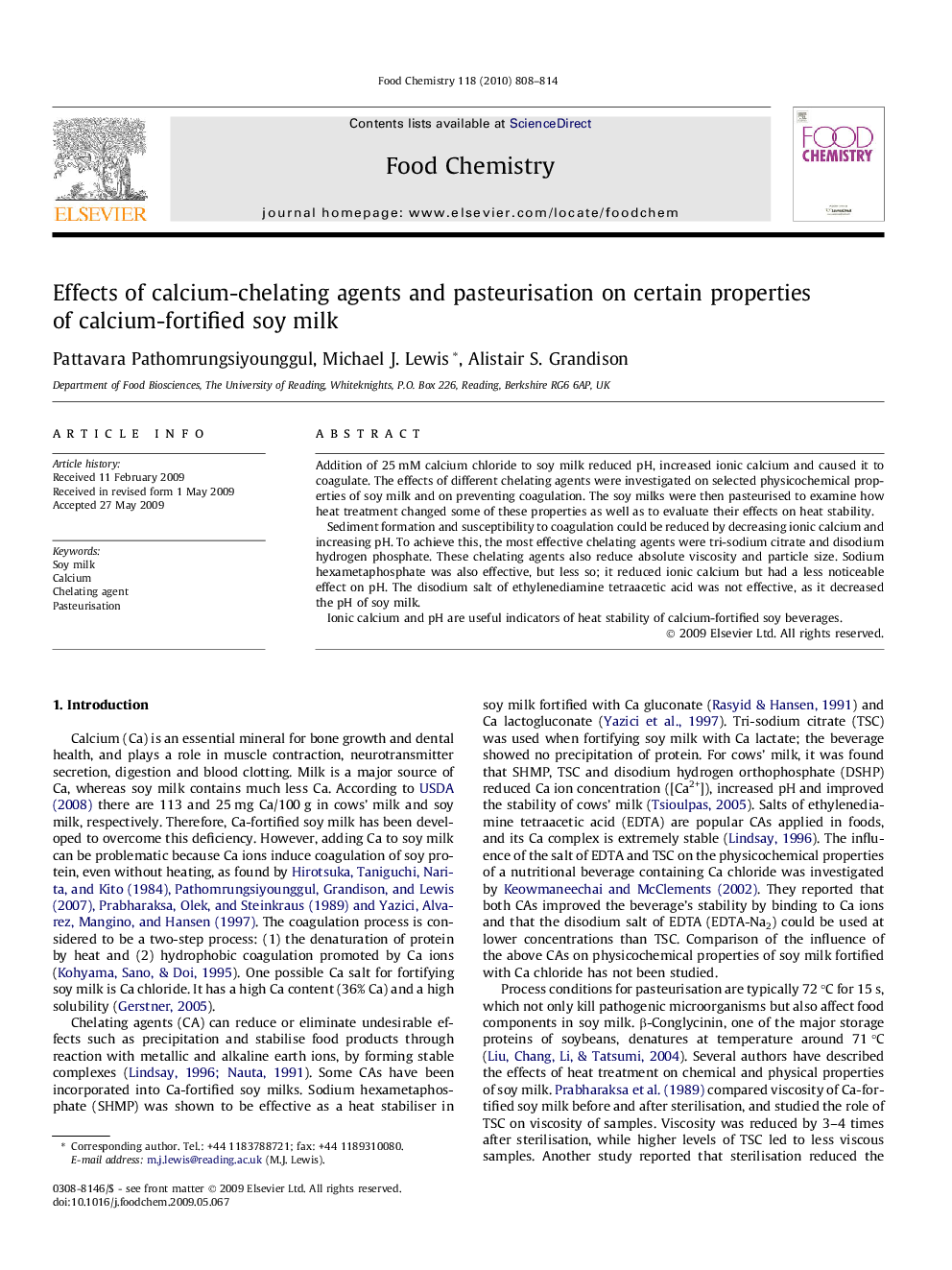| Article ID | Journal | Published Year | Pages | File Type |
|---|---|---|---|---|
| 1187281 | Food Chemistry | 2010 | 7 Pages |
Addition of 25 mM calcium chloride to soy milk reduced pH, increased ionic calcium and caused it to coagulate. The effects of different chelating agents were investigated on selected physicochemical properties of soy milk and on preventing coagulation. The soy milks were then pasteurised to examine how heat treatment changed some of these properties as well as to evaluate their effects on heat stability.Sediment formation and susceptibility to coagulation could be reduced by decreasing ionic calcium and increasing pH. To achieve this, the most effective chelating agents were tri-sodium citrate and disodium hydrogen phosphate. These chelating agents also reduce absolute viscosity and particle size. Sodium hexametaphosphate was also effective, but less so; it reduced ionic calcium but had a less noticeable effect on pH. The disodium salt of ethylenediamine tetraacetic acid was not effective, as it decreased the pH of soy milk.Ionic calcium and pH are useful indicators of heat stability of calcium-fortified soy beverages.
